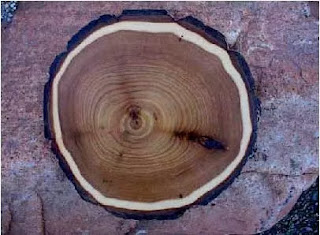The Smoke Screen of Wildfire Management
Mitigation Masks True Intentions in the Urban/Wild Interface
New sounds ring out in the forest. Not of birdsong, the chattering of the squirrel or the howl of the coyote, but the loud buzz of chain saws. "We must thin the forests, to lower the risk of wildfires," those who wield the power saws say. Fearful local homeowners support and add to this effort, creating "defensible space" around their homes.
Wait a minute. Does cutting, thinning and logging really lower the risk of wildfires? In the past year, I have visited several homeowners who live on the Front Range of Colorado, in communities such as Evergreen, Boulder, Conifer and Pine. Just by their names, you know the homes are nestled among trees. After the disastrous Marshall fire that burned 6,000 acres including 1,000 homes and commercial buildings at the end of 2021, people, insurance companies, and governments are turning to cutting down trees as a deterrent and solution.
Those who promote timber harvesting in national forests think it will not only solve the wildfire problem but also the need for timber to supply wood for construction. But the kind of trees that grow in these forests are pines and other soft woods that are not prized for home building like oaks, maples, ash and other hardwood trees. Those kinds of trees are grown on farms in the Southeast states, where there are not many national forests. Pine and other conifer trees are often used in home construction, especially in lower value homes. But most of the stands of desirable trees in easy-to-reach places have already been harvested or are on tree farms in the Northwest.
Trees in national forests are inconvenient to harvest. It's difficult to get equipment into these places and there are few roads to take timber out. Very few sawmills are near national forests. Much of the time, when the forests are logged, the timber is stacked and left on site or just scattered over the mountainside. It adds to the burnable fuel load, rather than reducing it.
Timber cutting also opens up the canopy, letting more sunlight and precipitation into the forest. So, what's wrong with that? There are many, many seeds on the forest floor. Given the opportunity, they will grow into grasses and weeds. A lush carpet will sprout. Then, when the hot dry summer comes, the plants will dry out and add again to the fuel load, ripe for burning. Due to these and other factors, research has shown that there is virtually no difference in the deadliness of fires in thinned and unthinned forests.
So, what is the real reason why there is such a push to cut down trees in national forests? I maintain that some politicians see trees as being in the way of development. Rather than reducing wildfire risk, fighting severe climate change, or even harvesting lumber, these people want to clear the way for profitable activities in the forests: mining, oil and gas extraction, construction and development. Once harvesting takes place in these forests, they will never be the same. There will be no going back.





Also see the related article on the administration's attempts to kill the Roadless Rule: https://nativeamersacredplaces.blogspot.com/2025/09/dont-let-roadless-rule-die-and-other.html
ReplyDeleteCommentary on the rash of executive orders slashing environmental reviews and mandating the doubling of timber production from national forests: https://www.denverpost.com/2025/09/03/logging-trees-national-forests-trump-bill/
ReplyDelete